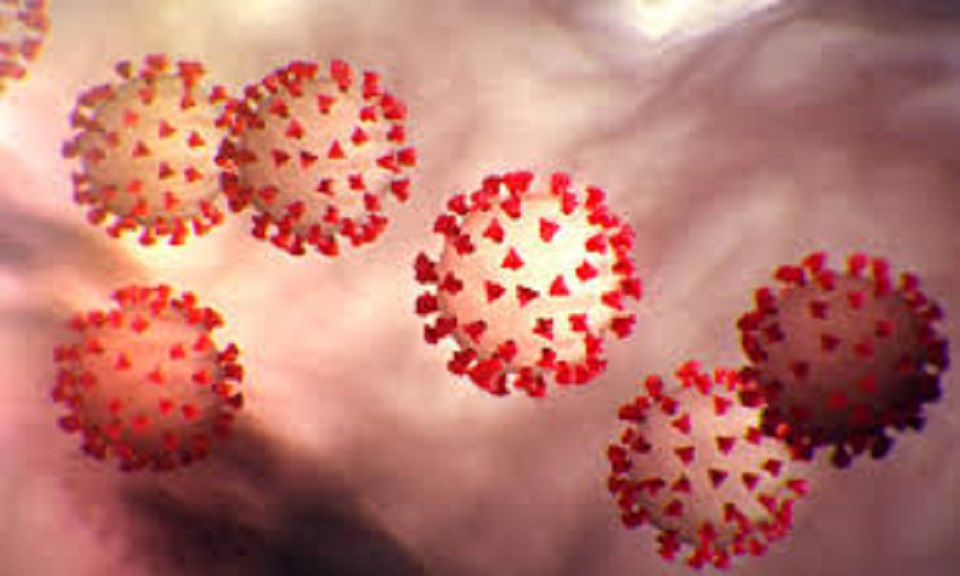
OR


Sandeep Thapa
The author is Research Officer at Kathmandu Center for Genomics and Research Laboratory (KCGRL)news@myrepublica.com
We have to be prepared for further outbreaks, must focus on the prompt diagnosis of cases and follow procedures for infection control
The outbreak of COVID-19 has affected the lives of millions of people globally. In December 2019, Chinese public health authorities reported several cases of acute respiratory syndrome in Wuhan. The disease is now called COVID-19, and the causative virus is named severe acute respiratory syndrome coronavirus 2 (SARS- CoV-2). It is a replacement strain of coronavirus that has not been previously identified in humans.
SARS-CoV-2 virus, a respiratory virus is an illness primarily characterized by fever and cough that can be transmitted between humans via respiratory droplets. Notably, the respiratory tract is probably not the only route of transmission. An epidemiological investigation has revealed that the virus is capable of efficient human-to-human transmission through direct or indirect contact with mucous membranes in the mouth, eyes, or nose.
Likewise, the aerosol is also a possibility of transmission. Besides, gastrointestinal symptoms, including diarrhea, nausea, and vomiting have been reported in COVID-19 patients. Generally, all populations are susceptible. As reported by several nations, defined risk groups of older adults and individuals with chronic underlying conditions are more vulnerable. Also, infected pregnant women and newborns are prone to develop severe pneumonia. Thus, these vulnerable patients should be registered as a focus on the prevention and management of SARS-CoV-2 infection.
Various preventive measures have been employed in an attempt to contain the spread of COVID-19 in many countries around the world, including Nepal. They range from ending mass gatherings, ban public spaces and closing schools, and a total lockdown with people forced to stay indoors. Equally, people are also observing self-isolation and quarantine measures. This has helped in curbing the transmission rate.
No vaccine or specific antiviral drug has been found to treat critically ill patients. The suitable supervision of patients mainly focuses on the provision of supportive care such as oxygenation, ventilation, and fluid management. Remdesivir is the most promising agent. Also, favipiravir and combination therapy with hydroxychloroquine plus azithromycin have been alternatively encouraged for the treatment of COVID-19 patients. Meanwhile, using the serum of recovered patients is a tried and tested approach, and trials are underway to study its effectiveness. This treatment appears to be helpful within the short term until definitive and effective treatments are found. So far, data on the efficacy of specific antiviral treatments are inconclusive, and the current series have reported a wide range of management options.
There are two primary methods for diagnosing COVID-19: a lateral flow immunoassay, which is a common point-of-care (POC) diagnostic approach that detects antibodies against specific viruses (e.g., SARS-CoV-2) in patient samples; and a molecular-based assay. The current standard approach for screening COVID-19 requires a reverse transcriptase real-time PCR assay (RT-PCR), which can be carried out using a variety of clinical specimens such as nasopharyngeal swabs
(NP), oropharyngeal swabs (OP), sputum, or blood. It is mandatory to impose adequate standard operating procedures (SOPs) that are in use and that staff is trained for appropriate specimen collection, storage, packaging, and transport. The deficiency of specific clinical features has added to the diagnostic challenge. This diagnosis approach relies on expensive facilities, well-trained personnel, and is often time-consuming, leaving a rapidly rising number of potential cases untested
and opening a gaping hole in disease prevention efforts. Big countries like the US, UK, and India acted slowly in responding to the outbreak.
They are also struggling with an acute shortage of ventilators and other medical equipment such as protective gear that has put the lives of health care workers in danger. As the number of confirmed cases of COVID-19 rises throughout the world, more and more patients will require reliable testing. For this, rapid, inexpensive, and easy-to-use POC diagnostic devices are needed.
In conclusion from an infectious disease perspective, based on the lessons learned from the previous well-known coronavirus outbreaks (e.g. MERS-CoV and SARS-CoV), we have to be equipped for further outbreaks, must focus on the prompt diagnosis of cases and follow procedures for control of infection. The unprecedented rise of infection has triggered global panic. A comprehensive strategy, including surveillance, diagnostics, clinical treatment, research, and development of vaccines and drugs, is instantly needed to win the battle against COVID-19 and other infectious diseases in Nepal. Rapid sample collection and testing of appropriate specimens from patients that meet the criteria of the suspected case for COVID-19 may be a priority for clinical management and outbreak control. All laboratories should follow national reporting requirements. In general, all test results, positive or negative, should be immediately reported to national authorities.
Besides, people should be educated on preventive measures. This includes identifying areas of risk, preventing new infections, and providing care for the citizens involved in essential services.
You May Like This
_20200621105320.jpg)
China’s economic crossroads
BRISBANE/NEW YORK – Back in 2013, the Chinese government laid out a policy agenda that promised real reforms to an... Read More...

Is COVID-19 killing democracy?
BRUSSELS – The economic consequences of the COVID-19 crisis occupy almost everyone’s thoughts and conversations. And for good reason: the... Read More...

ADB slashes Nepal's growth projection to 5.3%
KATHMANDU, April 4: The Asian Development Bank (ADB) has projected that Nepal's economy will grow by 5.3% in the current... Read More...





Just In
- NRB introduces cautiously flexible measures to address ongoing slowdown in various economic sectors
- Forced Covid-19 cremations: is it too late for redemption?
- NRB to provide collateral-free loans to foreign employment seekers
- NEB to publish Grade 12 results next week
- Body handover begins; Relatives remain dissatisfied with insurance, compensation amount
- NC defers its plan to join Koshi govt
- NRB to review microfinance loan interest rate
- 134 dead in floods and landslides since onset of monsoon this year












Leave A Comment